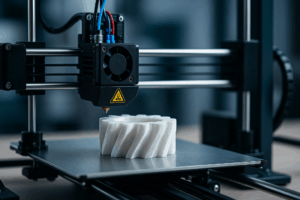3D printing has moved far beyond its early role as a tool for prototyping. Today, it is reshaping how products are designed, manufactured, and delivered. From reducing costs to driving innovation, 3D printing services are at the heart of the next industrial revolution.
The Benefits of 3D Printing in Manufacturing
Faster Prototyping and Product Development
Traditional manufacturing can take weeks to move from design to prototype. With 3D printing, functional models are produced in a matter of days—or even hours. This allows designers and engineers to test, refine, and improve products faster, cutting time-to-market significantly.
Lower Costs and Less Waste
Unlike traditional subtractive methods that cut away material, additive manufacturing builds objects layer by layer. This efficiency:
-
Reduces raw material usage
-
Cuts production costs
-
Minimizes waste generation
Customization at Scale
3D printing makes it possible to produce customized products without expensive retooling. Industries like healthcare, consumer goods, and automotive are already using it to:
-
Create patient-specific implants
-
Manufacture personalized accessories
-
Produce spare parts on demand
Enabling Innovative Design
Complex, lightweight, and high-performance structures that are nearly impossible with traditional methods can now be created. Aerospace companies, for example, use 3D printing to design lighter parts that reduce fuel consumption.
Supporting Sustainability
3D printing contributes to eco-friendly manufacturing by:
-
Reducing energy consumption
-
Producing locally, cutting shipping emissions
-
Supporting on-demand production to reduce overstock

Challenges Facing 3D Printing
Despite its benefits, 3D printing faces hurdles before achieving mainstream dominance:
-
High initial investment: Industrial printers and materials can be expensive.
-
Limited scalability: Large production runs may still favor traditional methods.
-
Material constraints: While expanding, available materials don’t yet cover every industry’s needs.
-
Regulatory barriers: Especially in healthcare and aerospace, approvals can slow adoption.
Future Trends to Watch
The next decade will bring rapid advances in 3D printing technology. Key trends include:
-
Wider material options: Metals, ceramics, composites, and bioprinting materials.
-
Integration with AI and IoT: Smarter, automated production lines.
-
Construction-scale 3D printing: Homes and infrastructure built faster and more affordably.
-
Global supply chain transformation: Decentralized production hubs closer to consumers.
3D printing services are no longer experimental—they’re a cornerstone of modern manufacturing. By enabling faster innovation, cost efficiency, customization, and sustainability, additive manufacturing is paving the way for the factories of the future. While challenges remain, the trajectory is clear: 3D printing will continue to revolutionize how the world designs and produces goods.
